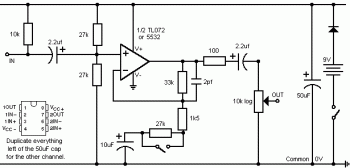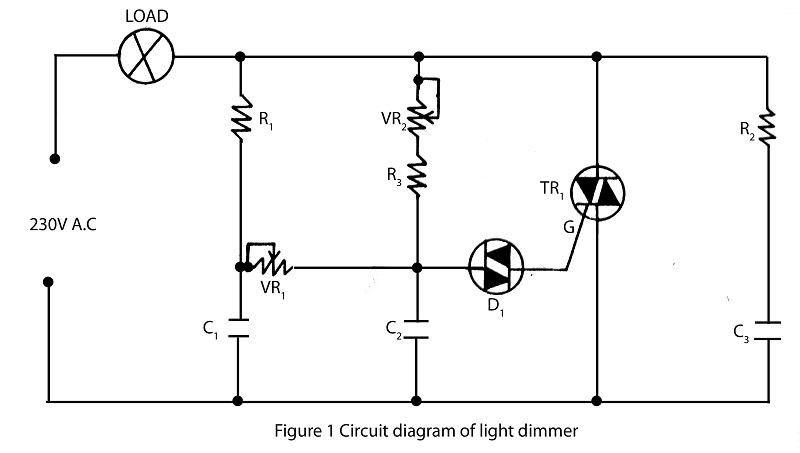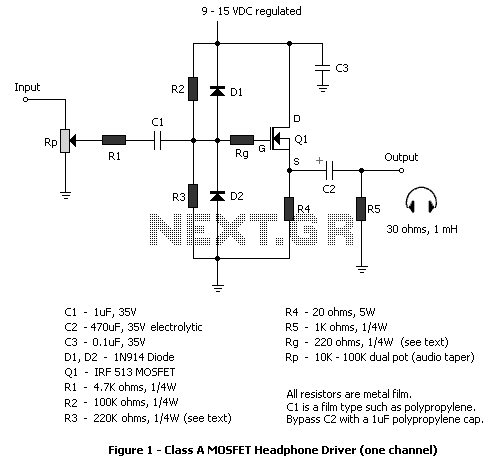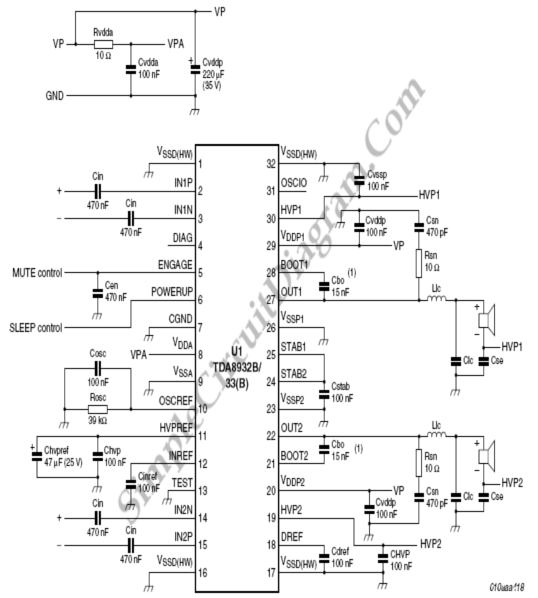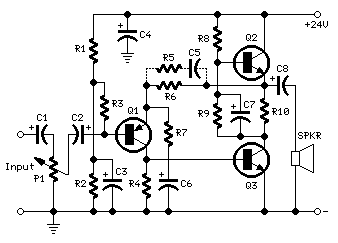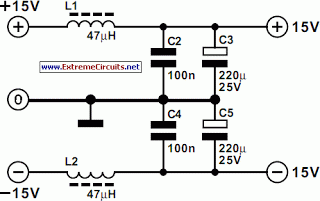
The Transistor Amplifier
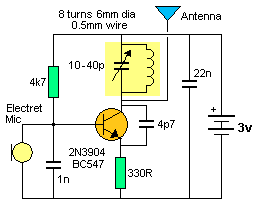
Time would be better spent explaining transistor and MOSFET behavior in a simpler manner and focusing on digital circuitry and microcontroller projects. A transistor cannot simply be placed into a circuit and expected to yield calculated results. The gain of a transistor can vary from 100 to 200 within a batch, which can change the outcome by 50%. There are thousands of transistors and hundreds of different makes, styles, and sizes of this remarkable device, but only two main types exist: NPN and PNP. The most common type is NPN, which will be discussed first. Various styles exist, but the smallest and most affordable is the General Purpose Transistor. The type numbers on the transistor may differ based on the country of manufacture or sale, but the actual capabilities remain the same. It is also known as a BJT (Bipolar Junction Transistor) to distinguish it from other types such as Field Effect, Uni-junction, and SCR, but it will be referred to simply as a transistor. Most small transistors come in a plastic case with leads arranged in a single line. The side of the transistor features a "front" or "face" with markings indicating the transistor type. A capacitor is present on both the input and output, indicating that the stage is decoupled from preceding and subsequent circuits in terms of DC voltages, allowing the transistor to establish its own operating point via the base resistor and load resistor. The values of these resistors should be selected so that the collector voltage is half the rail voltage, referred to as the "idle," "standing," or "quiescent" condition. When the collector voltage is at mid-rail, the transistor can be slightly turned off or on, causing the collector voltage to rise and fall. A small waveform at the input results in a larger waveform at the output due to the transistor's amplification. This stage typically has an amplification of approximately 70, known as "Stage Gain" or "Amplification factor," which indicates that both the output voltage and output current will be greater than the input voltage and input current, respectively. For example, as the incoming signal rises, the collector voltage drops, which is transmitted through the base-bias resistor to reduce the current delivered to the base. This results in a negative effect or negative feedback, preventing the transistor from achieving the expected output amplitude. A Common Emitter stage with fixed base-bias produces maximum voltage amplification but is challenging to set up, as the value of the base resistor can lead to the collector voltage being nearly zero or at full rail voltage. Achieving a mid-rail collector voltage is difficult. This configuration is classified as a "Class-C" stage, indicating it is at the threshold of being turned on by the base-bias resistor. It consumes minimal current while idle, making it the most efficient stage. The output waveform may exhibit distortion at the top or bottom, depending on the biasing, and an inductor placed in the collector can help reduce this distortion.
Transistors play a pivotal role in electronic circuits, serving as switches and amplifiers. The NPN transistor operates by allowing current to flow from the collector to the emitter when a sufficient voltage is applied to the base. In contrast, the PNP transistor allows current to flow from the emitter to the collector when the base is at a lower voltage than the emitter. The choice between NPN and PNP transistors often depends on the specific application and circuit configuration.
In practical applications, understanding the parameters of transistors, such as the current gain (β), is crucial. The current gain defines the ratio of output current to input current, influencing the amplification ability of the transistor. Moreover, the operating point, determined by the biasing resistors, is essential for ensuring linearity in amplification and minimizing distortion.
The use of capacitors in conjunction with transistors helps to stabilize the DC operating point while allowing AC signals to pass through, effectively decoupling different stages of the circuit. This is particularly important in multi-stage amplifiers where each stage must operate independently without interference from others.
In conclusion, while transistors are fundamental components in electronic circuits, their proper implementation requires an understanding of their characteristics and the surrounding circuitry. The interplay of resistors, capacitors, and the configuration of the transistor itself determines the overall performance and functionality of the circuit.Time would be much better spent on explaining transistor and MOSFET behaviour in a simpler way and getting on with digital circuitry and microcontroller projects. You simply cannot put a transistor into a circuit and expect it to produce the calculated results. The gain of a transistor can be from 100 to 200 in a batch and this changes the outcome by 50%! There are thousands of transistors and hundreds of different makes, styles and sizes of this amazing device. But there are only two different types. NPN and PNP. The most common is NPN and we will cover it first. There are many different styles but we will use the smallest and cheapest. It is called a GENERAL PURPOSE TRANSISTOR. The type-numbers on the transistor will change according to the country where it was made or sold but the actual capabilities are the SAME.
It is also referred to as a BJT (Bi-polar Junction Transistor) to identify it from all the other types of transistors (such Field Effect, Uni-junction, SCR, ) but we will just call it a TRANSISTOR. Most small transistors have a plastic case and the leads are in a single line. The side of the transistor has a "front" or "face" with markings such as transistor-type. Fig 10 has a capacitor on the input and output. This means the stage is separated from anything before it and anything after it as far as the DC voltages are concerned and the transistor will produce its own operating point via the base resistor and LOAD resistor.
We have already explained that the value of the two resistors should be chosen so the voltage on the collector should be half-rail voltage and this is called the "idle" or "standing" or "quiescent" conditions. When the voltage on the collector is mid-rail, the transistor can be turned off a small amount and turned on a small amount and the voltage on the collector will fall and rise.
(note the FALL and RISE). Fig 11 shows a small waveform on the input and a large waveform on the output. The increase in size is due to the amplification of the transistor. A stage like this will have an amplification of about 70. This is called "Stage Gain" or "Amplification factor" and consists of two things. The output voltage will be higher than the input voltage and the output current will be higher than the input current. For example, if the incoming signal is rising, the collector voltage will drop and this will be passed through the base-bias resistor to deliver less current to the base.
This is opposing the current being delivered via the signal and that`s why it is called NEGATIVE EFFECT or NEGATIVE FEEDBACK. Thus the transistor cannot produce the output amplitude you are expecting. Fig 11a and 11b shows a Common Emitter stage with fixed base-bias. This stage produces the maximum voltage amplification but it is very difficult to "set-up" because the value of the base resistor will either make the collector voltage nearly zero or full rail voltage.
It is very difficult to get the collector to sit at mid rail. It is a "Class-C" stage and means it is just at the point of being turned on via the base-bias resistor. It consumes the least current when "sitting around" and is the most efficient stage. The output waveform will be distorted at the top or bottom, depending on the biasing and an inductor in the collector can reduce the distortion.
See the article on FM 🔗 External reference
Transistors play a pivotal role in electronic circuits, serving as switches and amplifiers. The NPN transistor operates by allowing current to flow from the collector to the emitter when a sufficient voltage is applied to the base. In contrast, the PNP transistor allows current to flow from the emitter to the collector when the base is at a lower voltage than the emitter. The choice between NPN and PNP transistors often depends on the specific application and circuit configuration.
In practical applications, understanding the parameters of transistors, such as the current gain (β), is crucial. The current gain defines the ratio of output current to input current, influencing the amplification ability of the transistor. Moreover, the operating point, determined by the biasing resistors, is essential for ensuring linearity in amplification and minimizing distortion.
The use of capacitors in conjunction with transistors helps to stabilize the DC operating point while allowing AC signals to pass through, effectively decoupling different stages of the circuit. This is particularly important in multi-stage amplifiers where each stage must operate independently without interference from others.
In conclusion, while transistors are fundamental components in electronic circuits, their proper implementation requires an understanding of their characteristics and the surrounding circuitry. The interplay of resistors, capacitors, and the configuration of the transistor itself determines the overall performance and functionality of the circuit.Time would be much better spent on explaining transistor and MOSFET behaviour in a simpler way and getting on with digital circuitry and microcontroller projects. You simply cannot put a transistor into a circuit and expect it to produce the calculated results. The gain of a transistor can be from 100 to 200 in a batch and this changes the outcome by 50%! There are thousands of transistors and hundreds of different makes, styles and sizes of this amazing device. But there are only two different types. NPN and PNP. The most common is NPN and we will cover it first. There are many different styles but we will use the smallest and cheapest. It is called a GENERAL PURPOSE TRANSISTOR. The type-numbers on the transistor will change according to the country where it was made or sold but the actual capabilities are the SAME.
It is also referred to as a BJT (Bi-polar Junction Transistor) to identify it from all the other types of transistors (such Field Effect, Uni-junction, SCR, ) but we will just call it a TRANSISTOR. Most small transistors have a plastic case and the leads are in a single line. The side of the transistor has a "front" or "face" with markings such as transistor-type. Fig 10 has a capacitor on the input and output. This means the stage is separated from anything before it and anything after it as far as the DC voltages are concerned and the transistor will produce its own operating point via the base resistor and LOAD resistor.
We have already explained that the value of the two resistors should be chosen so the voltage on the collector should be half-rail voltage and this is called the "idle" or "standing" or "quiescent" conditions. When the voltage on the collector is mid-rail, the transistor can be turned off a small amount and turned on a small amount and the voltage on the collector will fall and rise.
(note the FALL and RISE). Fig 11 shows a small waveform on the input and a large waveform on the output. The increase in size is due to the amplification of the transistor. A stage like this will have an amplification of about 70. This is called "Stage Gain" or "Amplification factor" and consists of two things. The output voltage will be higher than the input voltage and the output current will be higher than the input current. For example, if the incoming signal is rising, the collector voltage will drop and this will be passed through the base-bias resistor to deliver less current to the base.
This is opposing the current being delivered via the signal and that`s why it is called NEGATIVE EFFECT or NEGATIVE FEEDBACK. Thus the transistor cannot produce the output amplitude you are expecting. Fig 11a and 11b shows a Common Emitter stage with fixed base-bias. This stage produces the maximum voltage amplification but it is very difficult to "set-up" because the value of the base resistor will either make the collector voltage nearly zero or full rail voltage.
It is very difficult to get the collector to sit at mid rail. It is a "Class-C" stage and means it is just at the point of being turned on via the base-bias resistor. It consumes the least current when "sitting around" and is the most efficient stage. The output waveform will be distorted at the top or bottom, depending on the biasing and an inductor in the collector can reduce the distortion.
See the article on FM 🔗 External reference
